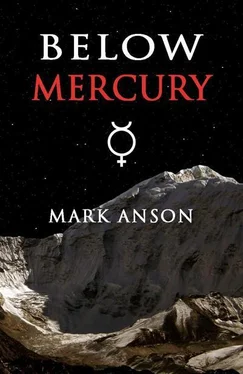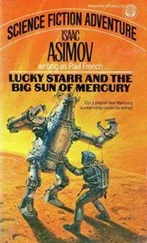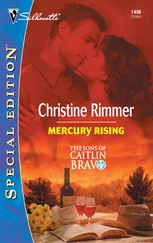Supersonic combustion (‘scramjet’) technology aims to get round some of these problems, but this technology brings problems of its own, including low net thrust levels and the likely need for hydrogen fuel. Although liquid hydrogen has a higher specific impulse (bang per kilo) than any other practical chemical fuel, its very low density means that fuel tanks have to be very large, with severe penalties in drag at hypersonic speeds, likely outweighing any advantage.
For these reasons, scramjets are not described in the spaceplane design, and liquid propane is used as a spacecraft fuel instead, due to its much higher density, and relative ease of storage and handling.
The navigation and flight controls of the spaceplane are based loosely on those found on large civil aircraft, with some additions and changes necessary for spaceflight.
The space tug
The concept of a ‘space tug’ like the Baltimore dates back to the 1970s, to a vehicle that remained in low Earth orbit and could be used to move crew and cargo about in orbit. In the story, this concept is extended into the enormous vehicles that ply between the planets, true leviathans of deep space.
The gaseous core nuclear engine that powers the Baltimore is based on concepts first explored in the 1950s. The engine utilises a nuclear reaction taking place in an incandescent, fissile gas (uranium tetrafluoride) to vaporise and expand the liquid propellant, providing thrust. Lower power settings provide heat energy to drive Brayton-cycle electrical power generators.
The engineering challenges of a practical gas core nuclear engine are immense, particularly how to prevent loss of the fissile gas through the exhaust nozzle. The engine as described uses a closed-cycle system, keeping the fissioning gas inside a transparent container, and heating the fuel through intense thermal radiation.
Again, liquid hydrogen is avoided as fuel for the nuclear engine (despite its higher specific impulse), and ammonia used instead, for its higher density and ease of storage. Ammonia also has many useful properties as a working fluid for the power generation and refrigeration circuits, and is plentiful in the outer Solar System.
Alternative propulsion systems for deep space include various kinds of electric and electromagnetic thrusters. Although these are remarkably efficient compared to nuclear thermal engines, they do not offer the high thrust levels that are necessary for orbit insertion manoeuvres and tolerable journey times in a manned spaceflight context.
The Baltimore also carries large stores of cryogenic propellants, to refuel the vessels that dock with it and to power its own manoeuvring engines, located at the end of the ship, near the reactor. These engines are conventional, i.e. non-nuclear, and are used for routine manoeuvres such as minor orbit changes.
As described in the story, the entire crew module can detach from the rest of the tug in an emergency, such as a main engine failure. In this case, the conventional rocket engines on the crew module can utilise the cryogenic propellant stores to get the crew back home, or to a place of safety.
The crew shuttle and fuel tankers
The crew shuttle vehicle is designed as a utility crew transfer vehicle, and can work equally well on any airless planets and moons where the surface gravity does not exceed one third of a gee. As the story suggests, it is not designed for operating off rough surfaces, but from a prefabricated silo, which provides all the necessary ground support services during maintenance and turnaround.
It is designed for simplicity and reliability of operation within its limited role, and is fuelled by liquid propane and liquid oxygen.
The fuel tankers, although not described in any detail in the story, are large, unmanned vehicles that carry propellants and other refinery products into orbit. A tanker can refuel a space tug’s tanks directly, or can be transported in a fully loaded state on the nose of the space tug to another destination.
The fuel tanker is composed of two main modules: a large spherical fuel tank; and an ascent/descent stage that is a larger version of the one used for the crew shuttle. Tankers are dedicated to particular payloads due to tank size and safety issues, liquid oxygen being a key example.
Maximum payload (for a fully loaded Mercury ascent and an empty return) is over 400 tonnes. Even with this huge payload, it would still take six full tankers to refuel completely a space tug’s liquid ammonia tanks.
The Mining Robots
There are no drawings of the robots; these are left to the reader’s imagination. The robots’ power source is a fuel cell powered by liquid propane. The ‘power pack’ described in the story is the fuel cell itself; this replaceable module contains the fuel cell and the batteries required to start it up. The cell is eventually exhausted (its reactor cell becomes poisoned by impurities in the fuel) and has to be replaced.
The fuel cell requires oxygen from the air to function and generate electrical power, so when the robots venture out into the open, they run on the charge contained in their main batteries, and recharge as soon as they are back in atmosphere again. In the story, Bob Five received a new cell shortly after the mission team reactivated him, so he was able to recharge his batteries and make it up the mountainside to the peak with Abrams and Elliott.
Orbital mechanics
The positions of the Earth, Sun, Mercury and other planets are described as they would appear in May to August 2151. The orbital transfer trajectories, journey times and spacecraft manoeuvres described in the story are consistent with the technologies described for the space vehicles and their performance data as shown in the drawings.
There is only one place where accuracy has been sacrificed intentionally, for dramatic effect.
Units of measurement
The nautical mile (NM) and the knot (kt) are used commonly in aviation as the units of distance and speed, respectively. The NM is convenient for navigation as it represents one second of arc on the Earth’s surface. On other planets, however, the terrestrial NM would be less appropriate, and the kilometre (km) and metre per second (m/s) are used instead, as a consistent system of measurement that would work in all situations. One metre per second is approximately two knots.
Flight levels used during ATC and DSC dialogue are metric: Flight Level 90, for instance, is 9,000 metres above mean sea level.
Aerospike: in rocket engine design, a type of engine nozzle that maintains its aerodynamic efficiency across a wide range of altitudes.
Airway: in mining, any passage which conveys a substantial airflow to or from more remote parts of the mine.
Alkane: a family of hydrocarbon compounds where each of the constituent atoms are linked together exclusively by single bonds. Methane, propane and butane are all alkanes.
Anorthosite: an igneous rock characterized by a very high concentration of plagioclase feldspar, and a low concentration of heavier elements. The ancient lunar crust is composed of anorthosite, formed by crystallisation from a magma ocean.
Aphelion: furthest distance of an orbiting body from the Sun.
Basalt: dark, fine-grained extrusive igneous rock, formed when molten magma erupts and cools on the surface of a planet.
Baseband: in telecommunications, a signal with low-frequency components (e.g. speech, or a digital bitstream) used to modulate a higher frequency carrier wave, so that the signal can be transmitted by radio.
Читать дальше











